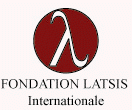| INDEX
Announcement Invited Speakers Program Public conference Abstract and Posters Participants Organizing Committee Contacts Registration Accommodation Travel |
Bose Einstein condensate: "an exotic fifth state of matter"
Announcement
Bose Einstein condensation in diluted atomic gases and in condensed matterThe intriguing physics of quantum fluids and the successful observation of the spectacular phenomenon of Bose-Einstein Condensation (BEC) in cold atom vapors, were the main motivation for awarding three Nobel prizes in Physics in 1997, 2001, and 2003. Since 1995, the research on BEC has seen a wide expansion, and has led to major improvements of our understanding of the behavior of highly degenerate Bose and Fermi gases at very low temperature. As a parallel but nonetheless fascinating field of research, the quest for BEC in condensed matter systems has made significant progress since the very first suggestion, by Moskalenko and Blatt in 1962, that a bound electron-hole pair in a semiconductor - an exciton - behaves as a boson and a gas of excitons is expected to undergo BEC under appropriate conditions. Apart from excitons, other kinds of excitations in solids have been proposed as possible candidates for BEC, including quantum Hall bilayers and magnons. Despite these efforts, however, the research on condensed matter BEC was slowed down by the much more complex behavior of electronic and magnetic excitations as well as by the intrinsic technological difficulty in achieving sufficiently low temperatures in a solid. Other limitations come from the finite lifetime of Bose excitations in a solid (contrarily to the virtually infinite lifetime of an atom as a single particle), implying deviations from thermal equilibrium, and from the inherent inhomogeneities of solid materials that lift translational invariance and thus momentum conservation.
|
Latsis
Foundation  "This Symposium is financed by the generous donation of the LATSIS Foundation" NCCR Quantum Photonics
"This Symposium is organised within the framework of the National Center of Competence in Research Quantum Photonics (NCCR QP)"
|
| Site
map • © 2008 EPFL , 1015 Lausanne, tel. +41 21
693 54 15 |